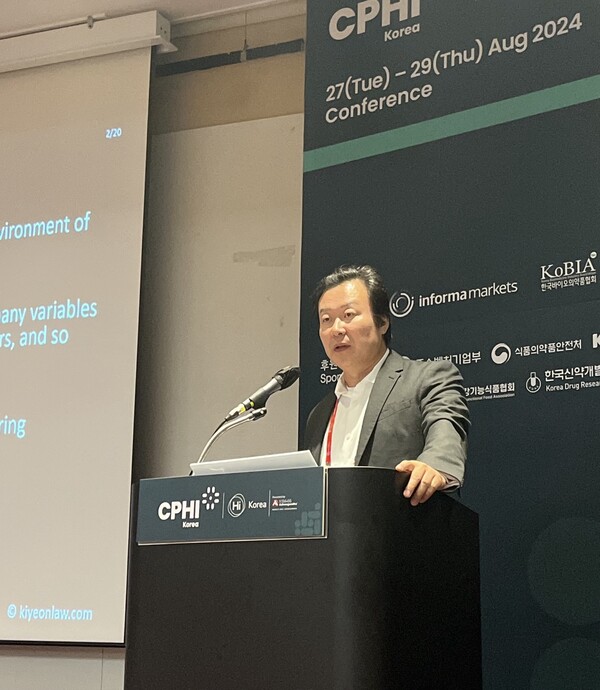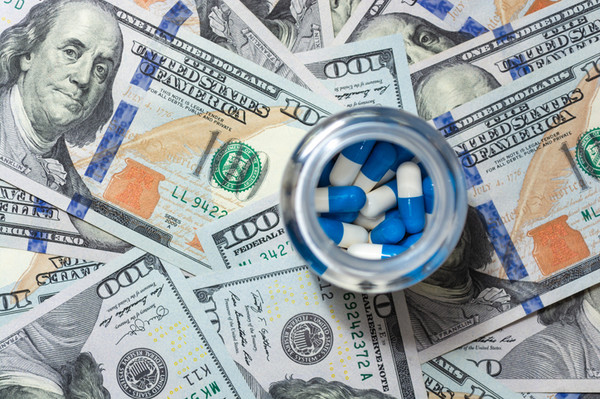Are the drugs currently available on the market necessarily the best drugs?
When Pfizer launched Lipitor (atorvastatin) in 1997, the drug’s initial allure was its ability to lower LDL-C, the so-called "bad" cholesterol, within a mere 30 days. But Pfizer knew that cold, hard science wouldn’t captivate the public. So, they pivoted.
The new message was simple yet powerful: Lipitor could reduce the risk of heart attacks.

This wasn’t just a rebranding; Pfizer fused scientific rigor with emotional resonance. By tapping into the primal fear of heart disease, Pfizer convinced millions that Lipitor was their lifeline.
By 2006, Lipitor became the best-selling pharmaceutical in history, with annual sales reaching $12.9 billion.
"Many drugs on the market are average in quality, yet they succeed because they are positioned effectively," said Daniel Zang, managing partner at Washington-based Kiyeon Law, which specializes in biotech-related matters, during his speech on global technology export strategies at the Convention on Pharmaceutical Ingredients (CPHI) Korea 2024 conference on Wednesday.
Drug development typically occurs in the controlled confines of a lab, far removed from the realities of the marketplace, where factors like cost, patient incentives, maximum patient adherence, and fierce competition can, as Zang put it, “spell the difference between blockbuster sales and disappointing returns.”
While safety and efficacy are primary focuses of drug development, he said, the real challenge lies in how well a drug can adapt to the complexities of the market.
How market positioning impacts a drug’s commercial success
"Even during drug development, companies shouldn’t just think like a researcher; they have to think like a marketer," Zang said, making the case that drug selection should be approached with the same mindset used for any product in the marketplace: by anticipating how it will be perceived and valued by the target audience.
A drug’s journey from concept to market is one of dramatic transformation. What starts as a molecule undergoes a complete evolution by the time it reaches the market. The drug and its market persona become "two fundamentally distinct entities, akin to entirely different species,” Zang explained. “While the molecule stays constant, its market presence is continually reshaped and repositioned.”
Mastering this market positioning is crucial, Zang said. It’s not just about the drug’s inherent properties; it’s about crafting a narrative for stakeholders—patients, physicians, insurers—about the drug’s value and unique benefits. This involves “envisioning the drug’s future role and market niche," he added.

“Once the future vision is clear, gathering supporting data—even if the evidence isn’t fully fleshed out yet—is key,” Zang said. “Critical unmet needs are often not so obvious.”
Before the introduction of the iPhone, many were content with their flip phones, until the advent of smartphones revealed their shortcomings and shifted consumer expectations.
Similarly, in drug development, unmet needs often lie hidden, and it’s up to innovators to uncover and address them, Zang said. “Companies should create and communicate innovative ideas that expose unmet needs people didn’t even realize existed.”
What patients care about—real-world benefits and practical use—is also often overlooked in the development phase. Generic claims like “Drug X is the best in its class due to its balance of efficacy and safety” may sound impressive but fail to resonate with patients’ true concerns. If drug positioning focuses solely on abstract metrics rather than practical needs, Zang said it risks falling flat.
Instead, he said positioning should highlight specific benefits and relevance to patients’ lives.
Patients are typically less interested in statistical data, which might appeal to specialists but seem distant to them. “For the average patient, a 'median efficacy of 50 percent' feels abstract and irrelevant to their personal chance of recovery,” Zang explained. “When statistics dominate the narrative, they may not connect emotionally with patients.”
Claims like “five-year overall survival” or “10 percent better than the competition” can also miss the mark if they don’t address individual situations. Knowing a drug improves survival rates by a percentage doesn’t directly translate to a patient’s personal likelihood of recovery.
“It’s crucial for drug positioning to communicate how the drug affects individual outcomes in a way that’s relatable,” Zang said.
Strategies for effective drug market positioning
So, how should companies effectively position their drugs in a competitive market?
“Develop a narrative that clearly illustrates how the drug improves patients' lives,” Zang advised. He outlined two primary approaches for achieving this: active positioning and passive positioning.
Active positioning is a hands-on strategy. It involves crafting messages and defining the drug’s role in the market, ensuring its benefits are clear. This approach requires tight coordination among research, marketing, regulatory, and development teams to shape the drug’s public perception.
“Active positioning is about creating a concept that resonates deeply with the target audience,” Zang explained. “The idea should be so compelling that it sticks with people after just one exposure.”
In contrast, passive positioning is a more laid-back approach. It relies on letting the drug’s attributes—such as indications, dosing, and clinical results—speak for themselves, hoping the market will naturally determine its value. However, Zang warns this method can result in missed opportunities if the drug’s unique benefits and target audience aren’t clearly communicated.
“Active positioning ensures that the drug’s benefits are clearly articulated and relevant, while passive positioning risks leaving the drug’s potential untapped.”
Zang also said that quantitative claims, like “our drug is 1 percent better,” often fail to make an impact. “Doctors and patients don’t base decisions on specific numerical data,” he said.
Instead, qualitative differentiators—practical benefits and user experiences—tend to be more persuasive. For example, a drug that requires dosing only once a day rather than three times is more attractive for long-term treatment. Similarly, a medication that consolidates multiple antibiotics into a single pill simplifies the process for both doctors and patients.
Moreover, Zang said that a drug that not only addresses a condition but also enhances overall quality of life leaves a deeper emotional impact. “Imagine a medication that manages depression in a way that positively affects the patient’s family and social circle. Such a drug creates a stronger connection and lasting impression.”

